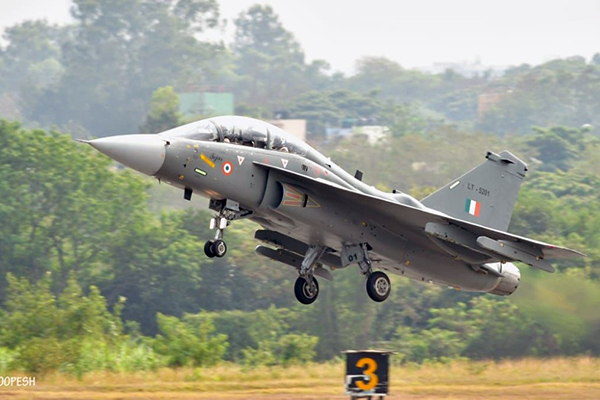On April 5, 2023, the first ever series production standard Light Combat Aircraft (LCA) Trainer (LT 5201) manufactured by Hindustan Aeronautics (HAL) took to the skies for its maiden flight from the company’s airport.
The aircraft completed a successful sortie of around 35 minutes, marking a major milestone in the LCA Tejas Programme. Behind the successful flight was a large team of engineers, designers, and technicians from HAL’s LCA team, supported by the Aeronautical Development Agency (ADA), Directorate General of Aeronautical Quality Assurance (DGAQA), and Centre for Military Airworthiness and Certification (CEMILAC).
LCA Tejas Trainer
The LCA Tejas Trainer is a critical component of the LCA Tejas programme, which has been in development for over three decades. The programme was launched in the 1980s with the goal of developing a lightweight, multirole fighter aircraft that could be operated by the Indian Air Force (IAF). Over the years this programme faced major challenges including funding shortages, technical difficulties, and delays in the development of critical components. Despite these challenges, the programme persisted, and the LCA Tejas Trainer is the latest success story in this long journey.
The LCA Tejas Trainer is a two-seater variant of the Light Combat Aircraft (LCA) Tejas, which was indigenously designed and developed by the ADA and HAL. This trainer is primarily used for pilot training purposes, as well as for combat missions.
The Tejas Trainer is an important addition to the IAF’s fleet of fighter aircraft, which includes the Russian Su-30MKI, Dassault Mirage 2000, and Mikoyan MiG-29. Designed to replace the aging fleet of British-made Hawk trainers that the IAF currently operates, this Trainer is expected to play a critical role in training the next generation of IAF pilots, as well as providing support for combat missions.
The Tejas Trainer is a highly advanced aircraft that incorporates the latest technology and design features. The aircraft’s fly-by-wire flight control system provides precise control over the aircraft’s movements, while its digital flight control system allows for automatic flight control and navigation. The aircraft’s advanced avionics system, including a glass cockpit and state-of-the-art radar, provides the pilot with a clear view of the surrounding airspace and critical flight information. One of the key features of the Tejas Trainer is its ability to perform advanced manoeuvres, such as high-G turns and rolls.
The Tejas Trainer is also equipped with a powerful General Electric F404-GE-IN20 turbofan engine, which provides a thrust of 84 kN. The engine is equipped with a Full Authority Digital Engine Control (FADEC) system, which ensures reliable and efficient operation. The aircraft’s Martin-Baker MK16 ejection seats provide the pilot and co-pilot with a safe means of escape in the event of an emergency. The Tejas Trainer has a maximum takeoff weight of 13,500 kg and a maximum speed of Mach 1.8. It has a range of 1,200 km and a service ceiling of 50,000 feet. The aircraft can carry a variety of weapons, including air-to-air missiles, air-to-ground missiles, and bombs. The cockpit is also equipped with a Head-Up Display (HUD), which projects critical flight information onto a transparent screen in front of the pilot’s line of sight.
India’s aerospace ambitions
The development of the LCA Tejas programme has been a long and challenging process, but it has also been a testament to the determination and ingenuity of the Indian aerospace industry. With continued investment and support, the programme has the potential to become a major player in the global aerospace industry, and the LCA Tejas Trainer is a key component of this vision.
Moreover, the Tejas Trainer is a key component of India’s military modernization efforts. As India continues to face security challenges from its neighbours and seeks to assert itself as a regional power, modernising its military capabilities has become a top priority. The Tejas Trainer is part of this effort, providing the IAF with a modern and capable fighter aircraft that can meet the demands of the 21st century battlefield.
The continued development of the Tejas programme is not only important for India’s military capabilities but also for the country’s aerospace industry.

















